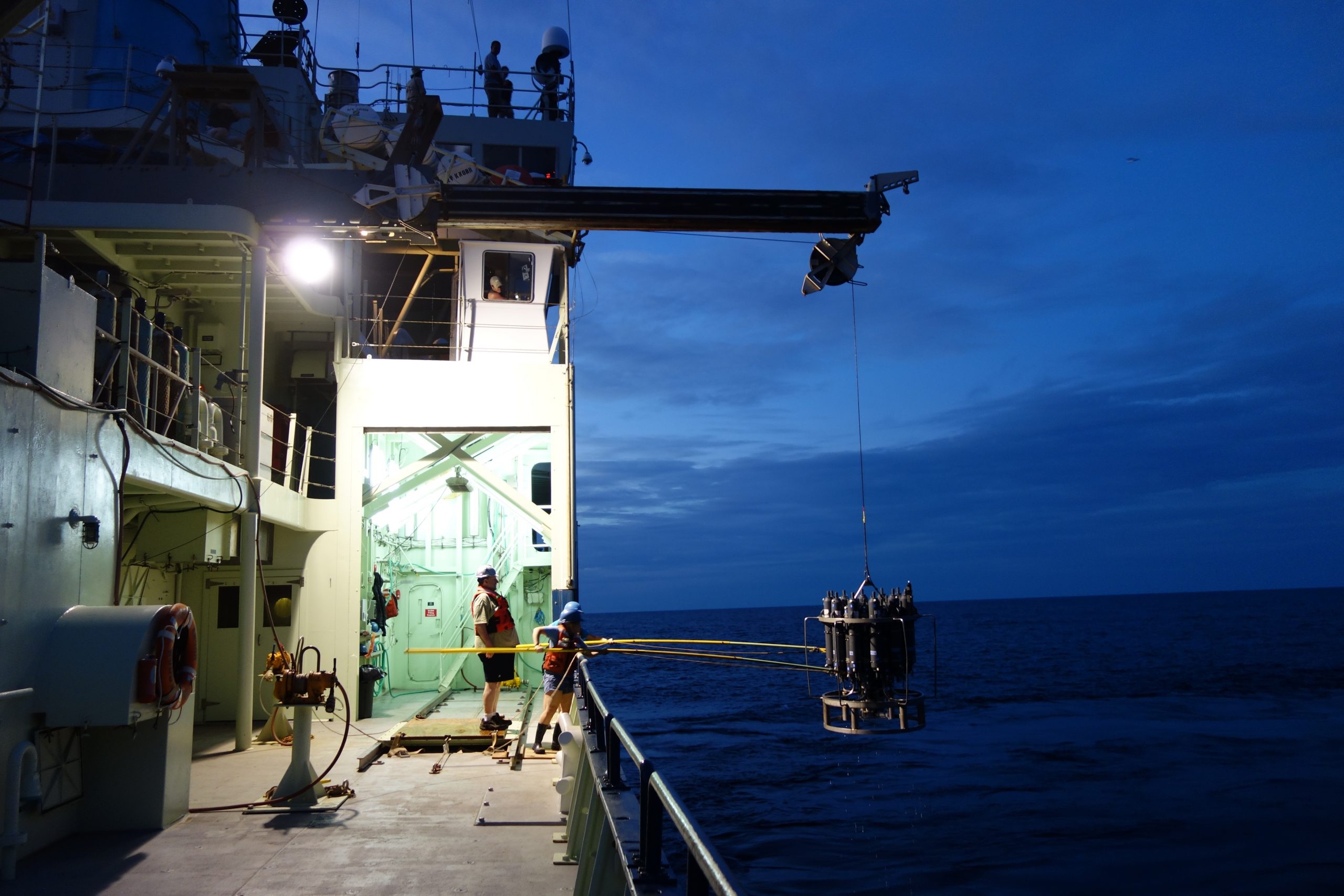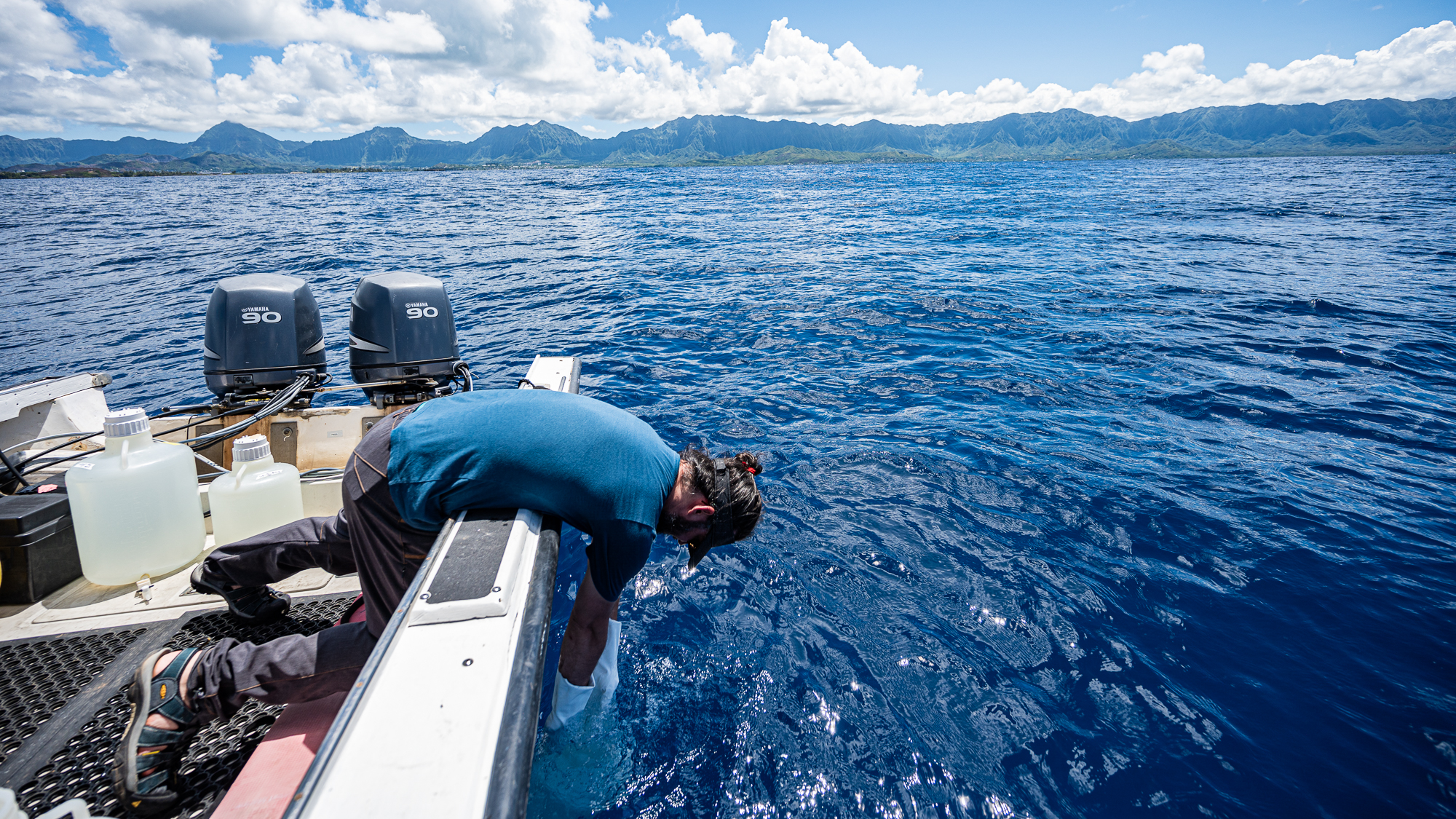Chemical Currencies of Surface Ocean Microbes
Research theme summary:
C-CoMP is identifying the central molecules and molecule classes that move carbon and other elements through the surface ocean or have key regulatory roles in these fluxes.


Strategic Chemical Identification
Bioreactive molecules serving as microbial currencies in the surface ocean are not easily identified or quantified. They are dilute, structurally complex, and require extraction or modification protocols prior to analysis. C-CoMP leverages recent advances in analytical chemistry that offer increased sensitivity, reproducibility, and resolution, with a focus on new derivatization protocols and advances in extraction and separation tools that further extend the analytical power of LC-MS and NMR in a seawater matrix. For all microbial metabolite measurements, we are working to use data science approaches to extract an ontology of substrates, co-factors, and signals based on common patterns in structure, occurrence, and fate.
Focused metabolite annotation
In addition to identifying bioreactive molecules, we need to understand the biology that generates and consumes these molecules. We are using gene and protein expression assays to pinpoint the microbial molecules being actively cycled and computational models to both identify new chemical targets and integrate gene, protein, and metabolite data to detect the corresponding chemical reactions. Phylogenomic analyses informed with metagenomic and metabolomic data is also used to uncover pathway diversification across evolutionary timescales with metabolic consequences. Iterative and complementary laboratory and modeling studies focusing on a selected suite of autotrophic and heterotrophic taxa feed into model systems research and cell- and community-scale modeling to identify key bioreactive molecules of the surface ocean.
Chemical & biological data integration
The C-CoMP metabolite ontology will be integrated with existing data platforms (e.g., GNPS, MAGI) to improve predictability of functions for poorly known or newly discovered molecules and to support extrapolation to biogeochemical roles. Data-driven strategies will help link known pathways to unobserved metabolites and unknown pathways to observed metabolites. C-CoMP is developing novel computational strategies involving machine learning to support data integration, discovery of relationships between chemical structure and biological reactivity, and computational prediction of enzymes or transporters that co-occur with metabolites.
Knowledge Transfer:
This research advances the following Knowledge Transfer aims:
- Ocean data ingestion - extracting patterns in structure vs. distribution of marine metabolites
- Software development - developing strategies for computational prediction of microbial genes that co-occur with bioactive molecules
- Molecular biology - identifying metabolites by new functional gene annotations
- Technology - identifying metabolites through advances in chemical instrumentation
